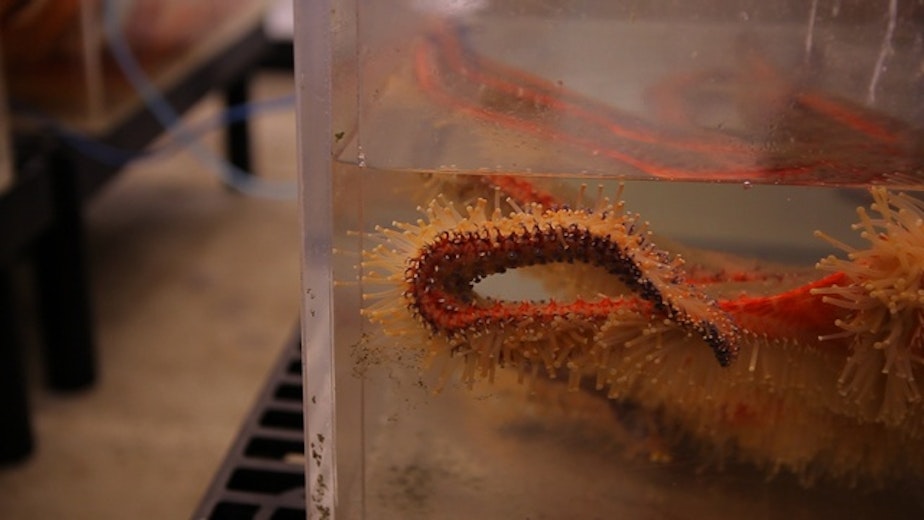Is Fukushima Radiation Causing Pacific Starfish Die-Offs?

Scientists seeking the answer to why starfish are dying off along parts of the west coast are almost certain that they can cross radiation from Japan’s Fukushima nuclear disaster off the list of causes.
EarthFix’s story on starfish die off and this video on the PBS NewsHour have been shared worldwide and viewed online almost a million times. Hundreds of viewers have left comments, many asserting that radiation must be what’s killing the starfish, or sea stars as scientists prefer to call them.
Join us for a live video screening and chat about sea star wasting at noon (PT) on Wednesday, Feb. 19.
Some reasons scientists don’t think radiation is behind these die-offs:
- Recent tests for radiation in seawater along the west coast have found “no detectable Fukushima cesium.” While small amounts of radioactive have reached the west coast, the largest concentration of radioactive water released during the nuclear meltdown is still moving across the Pacific. Scientists predict that the radiation plume will reach the west coast of the United States by around April 2014.
- The die-offs are patchy. This doesn’t line up with a giant plume of radiation moving across the Pacific. They’re popping up in certain places like Seattle and Santa Barbara and not in others, such as coastal Oregon, where there’s only been one report.
- Sites closer to the Pacific shorelines are being affected sooner than places farther out to sea. And there have not been reports of starfish die-offs in Hawaii or Japan. If Fukushima were the cause, it would stand to reason that starfish closer to the source would also be impacted.
- Sea star wasting syndrome predates the Fukushima nuclear disaster. As sea star expert and Smithsonian National Museum researcher Chris Mah writes, some of the earliest accounts of sea star wasting took place in the late 1990s. The Fukushima nuclear disaster happened in March 2011.
Sponsored
Researchers in Washington state are conducting infectiousness experiments to learn more about how this syndrome is spreading. They’re narrowing down the possibilities and may be close to an answer. Before they make an announcement, they will have their research methods and findings reviewed by the larger scientific community.
Copyright 2014 EarthFix. To see more, visit earthfix.kuow.org.
